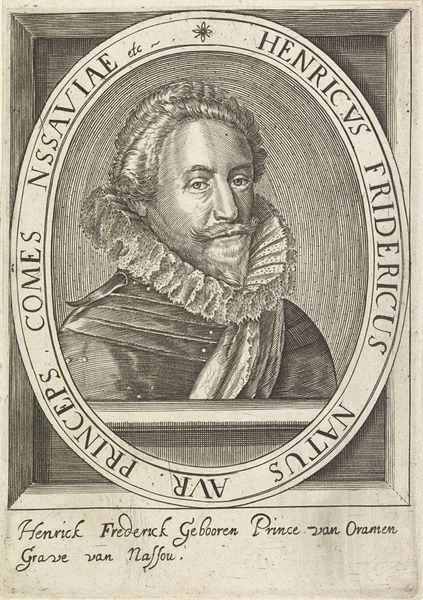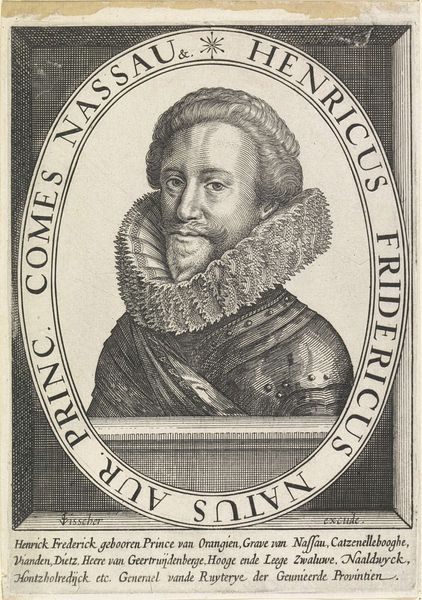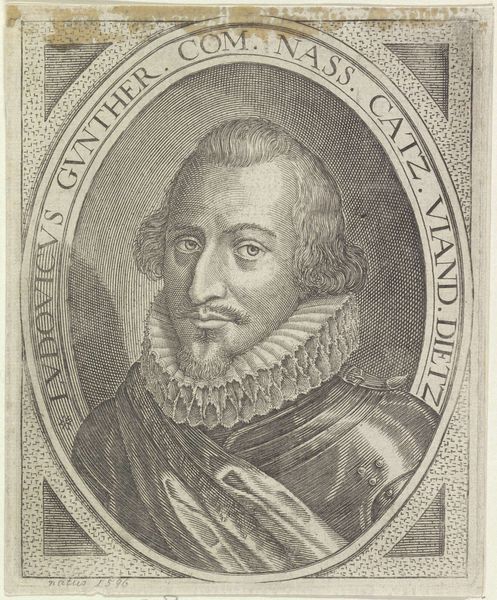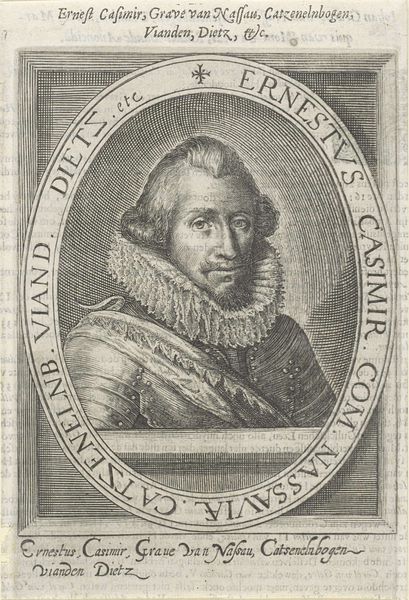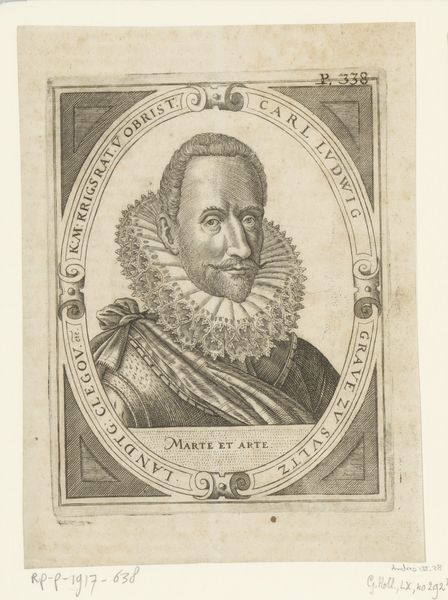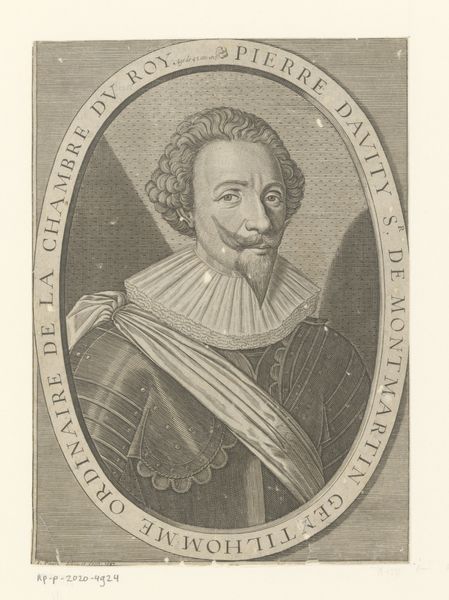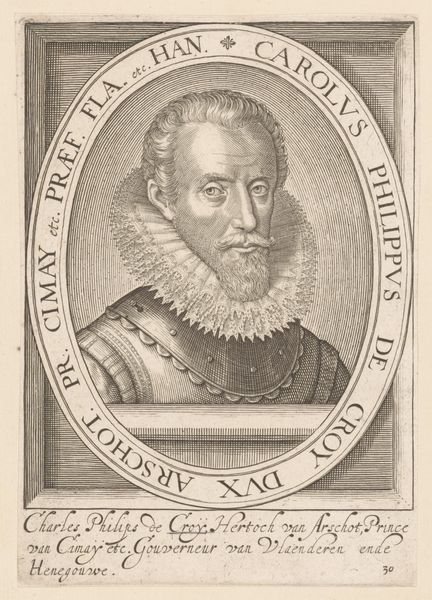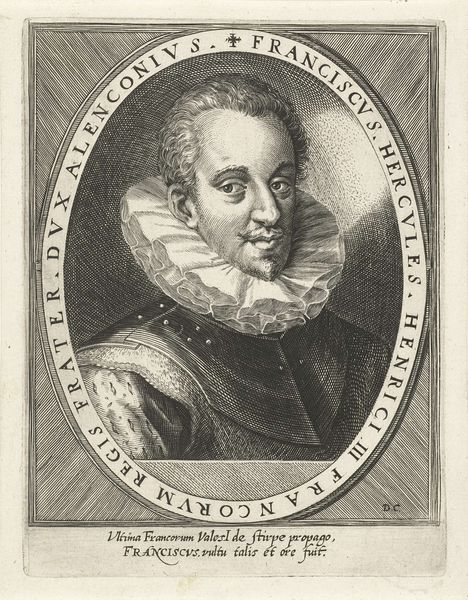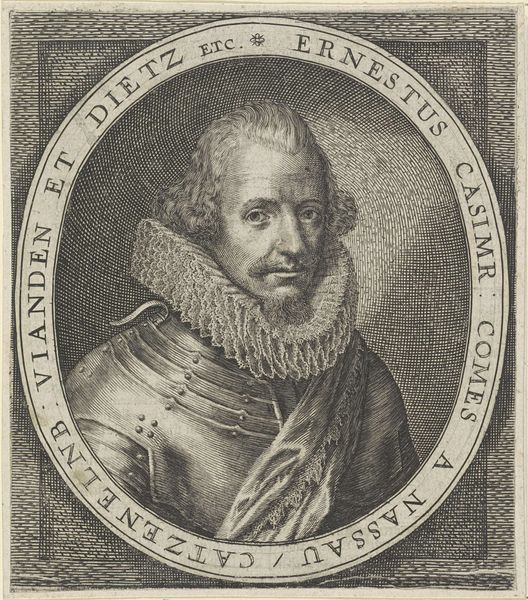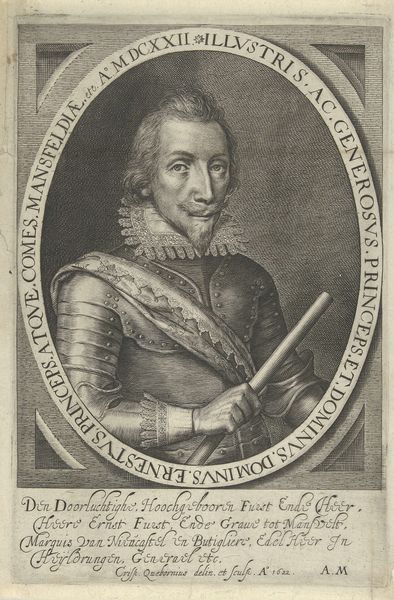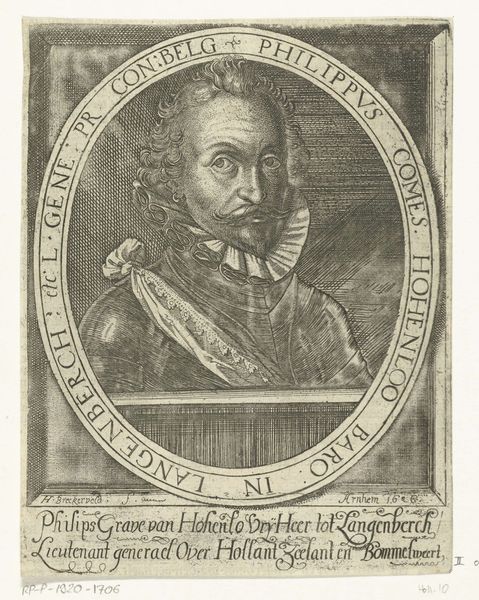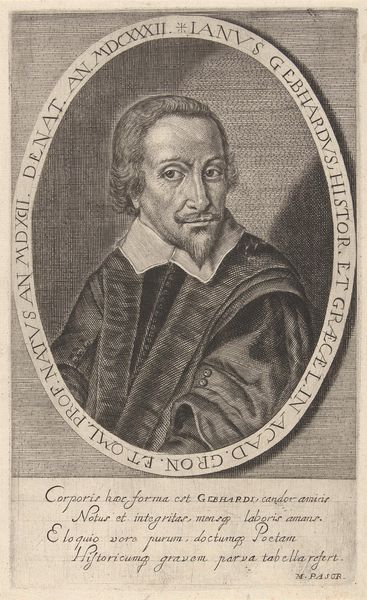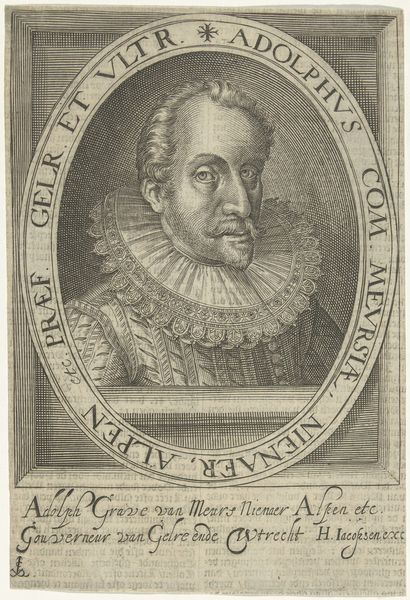
print, engraving
#
portrait
#
baroque
# print
#
old engraving style
#
portrait reference
#
engraving
Dimensions: height 178 mm, width 126 mm
Copyright: Rijks Museum: Open Domain
Editor: Here we have an engraving from the 17th century, "Portret van Frederik Hendrik, prins van Oranje," currently residing in the Rijksmuseum. It's…striking, I think is the right word. There's a formality to it, a certain weightiness in the details of his attire. What do you see in this piece, particularly regarding the cultural messages it's trying to convey? Curator: What immediately catches my eye is the elaborate ruff, the armor—each detail speaks volumes about status and power. It’s fascinating how clothing acts as a visual signifier, communicating not just wealth but also a certain understanding of societal hierarchy. What emotional associations do you have with it, thinking of similar powerful figures depicted over centuries? Editor: I see… almost a calculated stoicism. The artist isn't just presenting a face; they are crafting an image of leadership. Do you think this aligns with how Frederik Hendrik saw himself? Curator: Perhaps, but more importantly, how he wanted to be seen. Notice how the framing oval, inscribed with titles, reinforces this constructed persona. It’s interesting how such formal framing devices can turn an individual into a symbol. Have you noticed this in other baroque portraiture? Editor: Definitely! It seems like a way to ensure the sitter’s legacy and reputation. Is it fair to say images like this played a role in shaping historical narratives? Curator: Absolutely. This portrait serves not only as a likeness but also as a carefully orchestrated emblem, a touchstone for cultural memory and continuity, especially given the turbulent times of the Dutch Golden Age. Do you feel its weight? Editor: Yes, I see how symbols in images can resonate across time, carrying profound messages beyond just representation. That's insightful! Curator: Indeed. The engraving beautifully shows how individuals throughout history tried to solidify their position through cultural memory, using symbolism we can decipher even today.
Comments
No comments
Be the first to comment and join the conversation on the ultimate creative platform.
